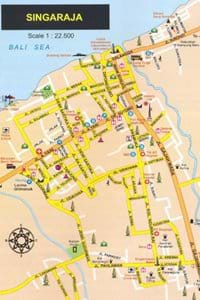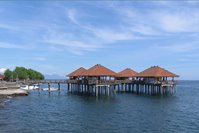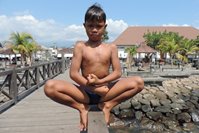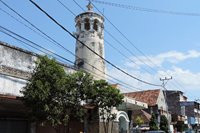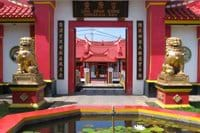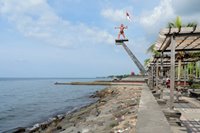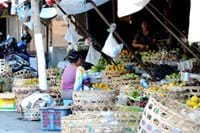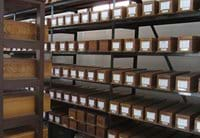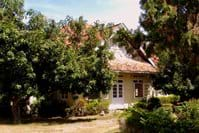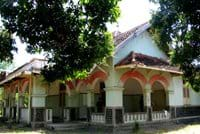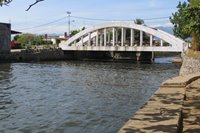Singaraja
Singaraja (literally Lion King) is the largest town on the north coast of Bali (over 100,000 inhabitants) and after Denpasar the biggest city of Bali. Until 1959 it was the capital. From the villa you can see this town at a distance of approximately 10 kilometers.
During the colonial period Singaraja was the administrative center of the Lesser Sunda Islands. The grandfather of one of the owners of the villa was Assistant-Resident here until the Japanese invasion. It is a spacious, and for Indonesian standards clean and quiet place with green-lined avenues and a compact center. And who is able to look through today’s traffic and billboards, can see see how it must have looked like during colonial times. There are many buildings and sites that remind of this, especially in and around Jalan Imam Bonjol. Some are unfortunately in poor condition.
In the colonial period Singaraja was also a major port. It retained it’s position as port city and main gateway to Bali until 1970 when the International Airport Ngurah Rai was opened in Denpasar. Today the port of North Bali is located at Celukan Bawang, west of Pemuteran. At the former port area in Singaraja some buildings with an Indian or Arabic character (Masjid Nur) can be found, as well as the beautiful Chinese Ling Gwan Kiong temple. These are testimonies of the multicultural and international city Singaraja once was. Ships didn’t moor here but used to anchor in the roads, and were freighted with barges and canoes. In the former harbor area there are a few colonial buildings left, as well as a Dutch bridge and a grand monument with a statue of the independence fighter Ketut Merta. He was killed by Dutch marines in October 1945 when he raised the red and white flag during independance war. Next to the monument is a jetty with some nice restaurants and in the harbour ground one finds the small Museum Soenda Ketjil (Museum lesser Sunda Islands).
Worth a visit are the two covered markets (pasar). A large two-storey market (Pasar Anyar) with mostly non-food, the recently openend new Pasar Banyuasri and a 'traditional' market where people buy their food and religious supplies. Indonesian and Western products (food and non-food) one can buy in the supermarkets Carrefour and Hardy's. There are several banksin Singaraja,and of course ATM's. Furthermore, in Singaraja are the best medical facilities of North Bali. There are several hospitals, of which Rumah Sakit Umum has the best repute. Among the tourist attractions are the unique library Gedong Kyrtia, set up in 1928 by the Dutch government official Calon. Here historic Dutch publications are kept, as well as acollection of lontar books, made of dried palmleaves, and copies of the even older engraved copperplates. Two Dutch scientists (Liefrinck and Van der Tuuk) did extensive research into these unique scriptures and the Balinese language, in the 19th and early 20th century.
A few kilometers inland from Singaraja you find the place Sawan, famous for the production of gamelan gongs and other instruments. Special ikats (indigenous weavings) are produced in several smaller plants in Singaraja (including Pertenunan Berdikari). Other sights include the palace of the former Raja of Buleleng (Puri Agung Buleleng) and the largest temple in North Bali (Puri Nagat Jata).

